
The Hospital de Sant Pau has collaborated in a study of the “Health Bus” project which concludes that 71.4% of middle-aged people, between 45 and 70 years old, in Lleida with a low or medium cardiovascular risk present atheromatous arteries, i.e. fatty plaques. Of these, 20% have generalised atheromatous disease, with more than 3 atheroma plaques. This finding reaffirms the assumptions about the prevalence of subclinical, undiagnosed disease in the population with common risk factors such as occult kidney disease or diabetes.

The Medical Research Institute of the Hospital de Sant Pau – IIB Sant Pau has been awarded this year’s Catalonia Construction Prize, in the category of innovation in construction, at the 17th edition of the Catalonia Construction Awards organised by the Barcelona Association of Quantity Surveyors (CAATEEB).

The spin-off, Exheus, has received the Award for Innovative Startup led by women at the MIT Enterprise Forum Spain, an event promoted by IESE Business School – University of Navarra and Massachusetts Institute of Technology that serves as a meeting point between startups, corporations, institutions and investors. This is a good recognition of the scientific-business work being carried out and the commitment to gender equality of the entire Exheus team and the institutions involved, including the Sant Pau Research Institute-IIB Sant Pau.

The Memory Unit of the Hospital de la Santa Creu i Sant Pau and the Sant Pau Research Institute, in collaboration with the Alzheimer’s and other cognitive disorders Unit of the Hospital Clínic – Idibaps and researchers of the world consortium The Dominantly Inherited Alzheimer Network (DIAN), have managed to detect cerebral changes in healthy subjects, although without clinical symptoms, which would be indicators of the beginning of an Alzheimer’s disease.

The Research Institute of the Hospital de la Santa Creu i Sant Pau of Barcelona, following this year’s motto “research for change”, wants to show how the scientific activity of the Institute in relation to Covid-19 has adapted to the situation of world health crisis caused by the new coronavirus. The activities will be conducted by the scientists of the Sant Pau Research Institute showing how they have focused their research on Covid-19 taking advantage of its relationship with the patients, or how one area of the Research Institute has become an oncohematological hospital to safely care for immunosuppressed patients.
That is why it has organized a series of activities.

Research Night talks
For the third consecutive year, Catalonia is hosting the European Research Night event, which will take place on 27th and 28th of November. More than 50 scientific organisations from all provinces are organising talks, workshops, games, experiments and many other activities for all audiences. The Hospital de Sant Pau has organised a series of activities such as micro-talks on its research projects and curiosities about its area of expertise, and informative talks in schools. You will find the information below.
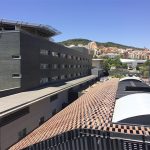
AlmirallShare, the open innovation platform of Almirall, SA (ALM), announces two new collaborations with the Research Institute Foundation of the Hospital de la Santa Creu i Sant Pau and the University of South Australia (Unisa) with the aim of finding new ways of treating skin cancer and atopic dermatitis.
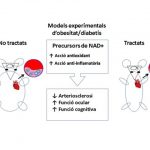
Dr. José Julve, the researcher in charge of the Miguel Servet programme (Carlos III Health Institute) at the Hospital de la Santa Creu i Sant Pau Research Institute – IIB Sant Pau will give the next session of “Science Mondays” with the lecture entitled “Anti-inflammatory potential of NAD+ precursor molecules in experimental models of diabetes mellitus”. The conference will take place on Monday 30 November at 6 p.m.

Pablo Alonso Coello, head of the Clinical Epidemiology and Health Services Research Group at the Sant Pau Research Institute – IIB Sant Pau has been one of the researchers on the “Highly Cited Research” list of the world’s most influential scientists, published by Clarivate Analytics, since 2016. The list, one of the most reputable classifications among the international academic and scientific community, identifies the experts who are in the top 1% of their speciality in various areas of study.

The team of the Molecular and Therapeutic Pathology of Atherothrombotic and Ischemic Diseases “ICCC Cardiovascular Programme” research group, led by Dr. Lina Badimon, from the Sant Pau-IIB Sant Pau Research Institute, is participating in the COVIRNA project, which is coordinated by the Luxembourg Institute of Health (LIH). This is one of the 23 research projects that have been awarded within the framework of the Horizon 2020 call for Expression of Interest. The work aims to promote the development of a new diagnostic test to predict the results of Covid-19 for patients and to improve cooperation between European research institutions to strengthen the response to the pandemic.
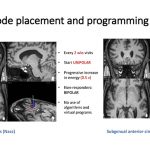
The Unit of Resistant Schizophrenia of the Sant Pau Psychiatric Service, led by Dr. Iluminada Corripio, the Research Group in Clinical Psychiatry of the Sant Pau Research Institute – IIB Sant Pau, led by Dr. Maria J. Portella, and the Research Group on Severe Mental Disorders of FIDMAG Hermanas Hospitalarias, led by Dr. Edith Pomarol-Clotet, all attached to the Center for Biomedical Research Network in Mental Health (CIBERSAM), have published the first trial in the world on the application of the surgical technique of deep brain stimulation (DBS) in patients with treatment resistant schizophrenia, which suggests that this procedure may be beneficial in some patients who do not respond adequately to any other treatment.

Next Monday, November 23, at 6 pm, the conference will be held: “The long road to describe a new muscle disease” by Dr. Montse Olivé Plana. Dr. Olivé is a member of the Neuromuscular Diseases Research Group of the Sant Pau Research Institute – IIB Sant Pau and a specialist in the Neuromuscular Diseases Unit of the Sant Pau Hospital’s Neurology Service. This session is part of the Science Monday cycle and will be streamed.
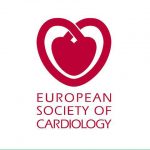
93% of patients with type 2 diabetes have a high or very high risk of fatal events such as heart attack or stroke within a decade. This is the conclusion of a study published in the European Journal of Preventive Cardiology, a journal of the European Society of Cardiology (ESC), in which researchers from the Sant Pau Research Institute- IIB Sant Pau have participated. In view of these data, the prevention of heart attacks and strokes in patients with type 2 diabetes treated in primary care should be an urgent priority.

Fighting the bad guys involved in abdominal aortic aneurysm is the challenge that the super-scientists explain in their one-minute video, which received the highest score from the CIBER jury in the #QueSigaLaCiencia call for entries. Lídia Puertas, from the Research Group Regulatory Mechanisms of Cardiovascular Remodeling at the Sant Pau-IIB Sant Pau Research Institute, and Saray Varona, researcher at the CIBER of Cardiovascular Diseases (CIBERCV) at the Spanish National Research Council (CSIC), thus become superheroines fighting this cardiovascular disease.Lídia Puertas y Saray Varona, premiadas en la primera convocatoria de vídeos #QueSigaLaCiencia del CIBER.

Saúl Martínez-Horta, neuropsychologist of the Movement Disorders Unit of the Sant Pau Neurology Service, and of the Parkinson’s Disease and other Movement Disorders Research Group of the Sant Pau Research Institute -IIB Sant Pau, has been awarded the best oral communication presented at the LXXII Annual Meeting of the Spanish Society of Neurology (SEN), in the category of Movement Disorders.

On November 18, at 6.30 pm, Dr. Amalia Sillero, surgical nurse at the Hospital de Sant Pau and researcher of the Nursing Care Research Group of the Sant Pau Research Institute – IIB Sant Pau, will give a lecture on “The application of the values of magnetism in the surgical area of a high-tech hospital”, the subject of her doctoral thesis. The session will be done in streaming.
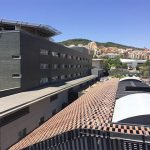
The Memory Unit of the Sant Pau Neurology Service and the Neurobiology of Dementia Research Group of the Sant Pau Research Institute, led by Dr. Alberto Lleó, have participated in a study on the impact of Covid-19 on individuals with Down syndrome. This work has been developed and carried out by the T21RS Covid-19 working group. The report contains information on symptoms, risk factors and outcomes after a diagnosis of Covid-19 in people with Down syndrome.

On 10 and 11 November the “I VATS Course in Animal Model” will be held in Sant Pau. This course is aimed at surgeons who are particularly interested in thoracoscopic surgery and combines the technique in the animal model with the broadcast of a live surgery. The lecturers are Dr. Belda, Dr. Cladellas, Dr. Martínez and Dr. Trujillo-Reyes, all from the Sant Pau Thoracic Surgery Service. Attached you will find the course programme.
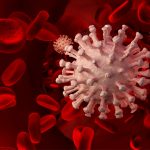
On 16 November at 6 pm, Dr. José Manuel Soria, head of the Genomics of Complex Diseases Research Group at the Sant Pau Research Institute – IIB Sant Pau and scientific director of Exheus, will give the conference “Risk of thrombosis associated with Covid-19”. For more information, see the programme with the next conferences in the cycle.